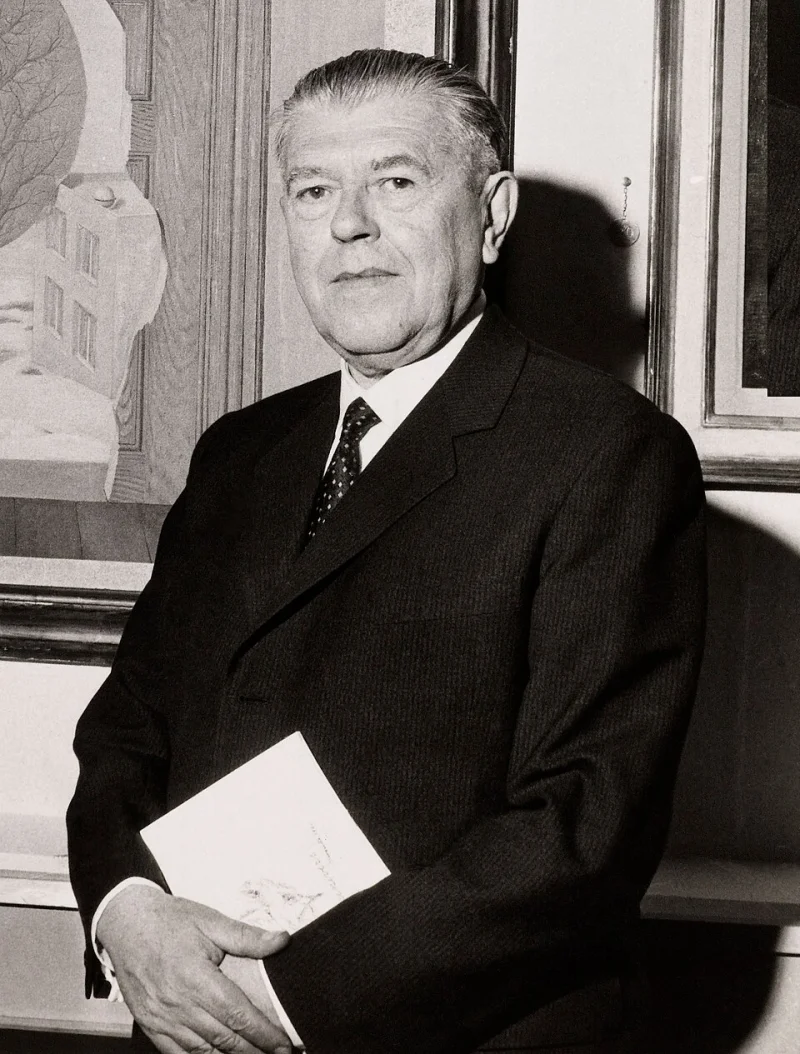Short Summary
René Magritte was a renowned Belgian surrealist artist, celebrated for his thought-provoking and enigmatic paintings that challenge viewers' perceptions of reality. His work, characterized by its witty and philosophical undertones, has left a significant mark on the art world. Magritte's unique approach to surrealism has made him one of the most influential artists of the 20th century, with iconic pieces such as "The Treachery of Images" and "The Son of Man" that continue to captivate audiences worldwide.
Early Life & Education
Born on November 21, 1898, in Lessines, Belgium, René Magritte was the eldest of three sons in a middle-class family. His father was a tailor and merchant, while his mother was a milliner. Tragedy struck the family when his mother drowned herself in the River Sambre when he was just 14. This event had a profound impact on him and influenced his artistic vision. Magritte began drawing classes at a young age and later enrolled at the Royal Academy of Fine Arts in Brussels in 1916. His early works were influenced by futurism and cubism, but he soon found his unique style in surrealism.
Career Highlights
René Magritte's career took off in the 1920s when he joined the Belgian Surrealist movement. His first solo exhibition in 1927 was met with criticism, prompting him to move to Paris, where he interacted with prominent surrealists like André Breton. During the late 1920s and 1930s, Magritte developed his signature style, characterized by ordinary objects in unusual contexts, challenging viewers' perceptions. His artworks often featured unexpected juxtapositions and clever visual puns. By the 1950s, Magritte's work gained international recognition, and he held several exhibitions across Europe and the United States, securing his place as a pioneering figure in surrealism.
Major Achievements
- Developed a distinctive surrealist style that challenged viewers' perceptions of reality.
- Created iconic artworks such as "The Treachery of Images" and "The Son of Man."
- Influenced later artists and movements, including pop art and conceptual art.
- Held numerous solo exhibitions worldwide, cementing his global reputation.
- Contributed to the Belgian Surrealist movement, shaping its direction and influence.
Famous Quotes
- "Everything we see hides another thing, we always want to see what is hidden by what we see."
- "Art evokes the mystery without which the world would not exist."
Interesting Facts
- Magritte often featured bowler hats in his paintings, inspired by his own wardrobe.
- He worked in advertising to support himself financially before achieving fame.
- Magritte's paintings often blur the line between reality and illusion.
- He was a fan of detective novels and incorporated mystery elements into his art.
- Magritte's influence extends beyond art, impacting film, literature, and music.
Legacy / Influence
René Magritte's legacy continues to resonate in the art world, with his innovative approach to surrealism influencing generations of artists. His exploration of reality and illusion has inspired movements such as pop art and conceptual art. His works are celebrated in major museums globally, and his iconic imagery, such as the bowler hat and apple, remain ingrained in popular culture, underscoring his enduring impact on both art and society.
FAQ
Q: Why is René Magritte famous?
A: He is famous for his surrealist paintings that challenge viewers' perceptions of reality.
Q: What is "The Treachery of Images"?
A: It is one of Magritte's most iconic paintings, featuring a pipe with the text "Ceci n'est pas une pipe," highlighting the difference between an object and its representation.
Q: How did René Magritte influence pop art?
A: His use of everyday objects in unexpected contexts inspired pop artists to explore similar themes in their work.
Q: What themes are common in Magritte's work?
A: Common themes include reality versus illusion, identity, and the juxtaposition of ordinary objects in surreal settings.












